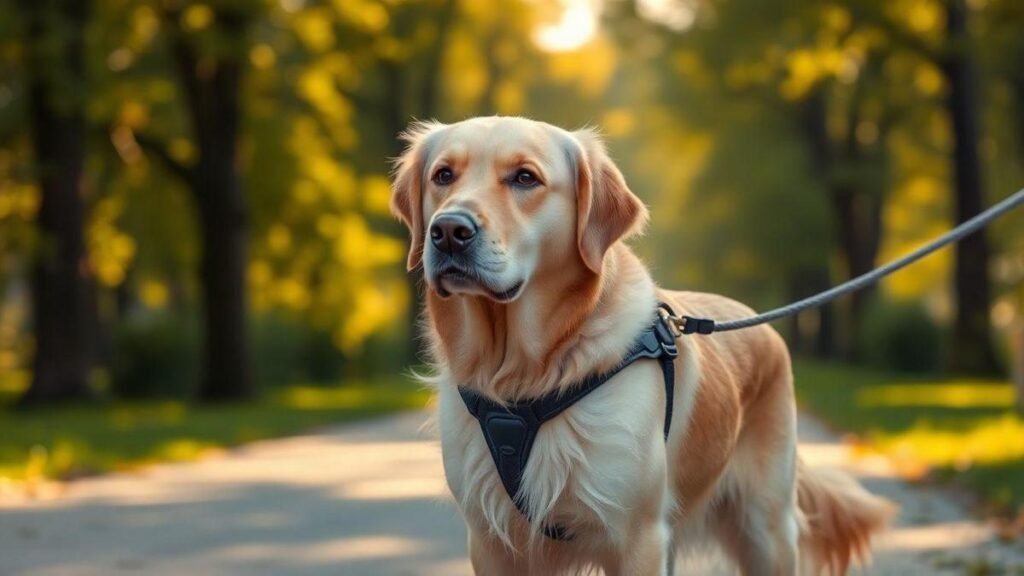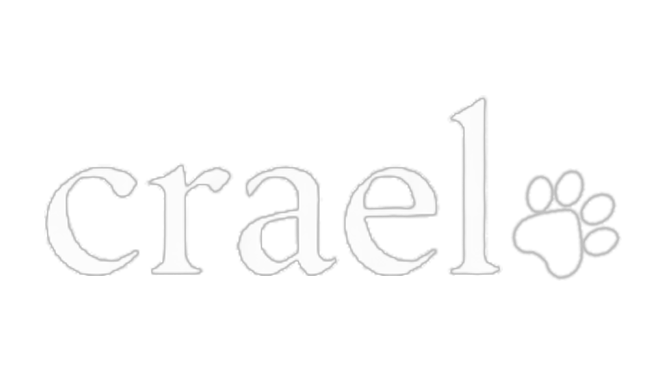Como adestrar seu cão para não puxar a coleira durante passeios — Reward‑based loose‑leash walking
I’ll show how I teach gentle, reward‑based loose‑leash walking that actually works. I use treats and calm praise to mark when my dog walks beside me. I stop the walk the moment my dog pulls, so pulling never earns progress. I practice short sessions and frequent, calm walks to build habits. I choose a front‑clip harness for safe redirection and always check fit and comfort. I teach puppies with play, a clear cue, and patience. If you’re searching for “Como adestrar seu cão para não puxar a coleira durante passeios,” this step‑by‑step method matches that goal.
Key points
- Stay calm and stop when the dog pulls.
- Use treats to reward loose‑leash walking.
- Change direction to get your dog’s attention.
- Keep walks short and practice often.
- Praise small wins and stay patient.
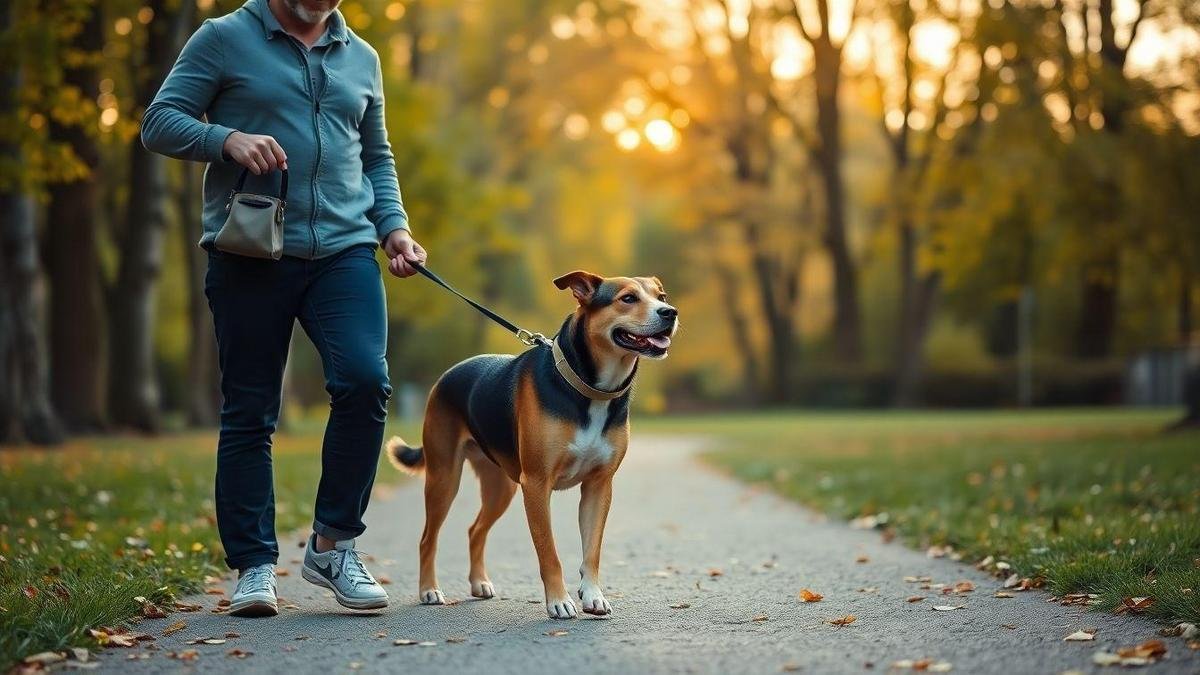
How I teach loose‑leash walking (and why it matches Como adestrar seu cão para não puxar a coleira durante passeios)
I used to have a dog who lunged and tugged. Frustrated, I switched to a simple, reward‑based method. It helped both of us and reduced stress on walks. Below are the core techniques I rely on—clear, repeatable, and kind.
1) Mark and reward the correct position
I carry small, soft treats and a quiet marker word like Yes! or a clicker. I treat the moment my dog’s shoulder lines up with my knee and the leash is loose. Then I give calm praise. That immediate feedback links the right position to reward.
Quick checklist:
- Treat when dog is beside you and leash is loose.
- Praise when dog looks at you.
- Reward a dog ahead but with slack leash by treating at your side and moving on.
I start rewarding frequently, then space treats as the behavior stabilizes. For basic timing and cues, pairing this with gentle obedience foundations helps — consider building on basic obedience skills so rewards mean something consistent.
2) Stop the moment the dog pulls
When my dog pulls, I freeze. No scolding. No tugging. I wait until the leash relaxes, then I resume walking and reward the loose leash. This teaches that pulling = no forward motion, while a loose leash leads to progress.
Simple rule:
- Pull → Stop.
- Leash slack → take a step, say Yes! and give a small treat.
3) Use short, frequent walks to build habits
Short sessions keep my dog focused and let me reward often. Rather than one long walk, I take multiple short walks or repeat short training bursts during a walk.
Sample progression:
- Days 1–3: 3 walks/day, 5–8 minutes, reward side walking often.
- Days 4–7: 2–3 walks/day, 8–12 minutes, increase time between treats.
- After week 1: 1–2 walks/day, 12–20 minutes, maintain loose leash with fewer treats.
If you keep a simple daily plan it helps consistency — try combining this with a short routine from a daily routine guide so training becomes part of the day.
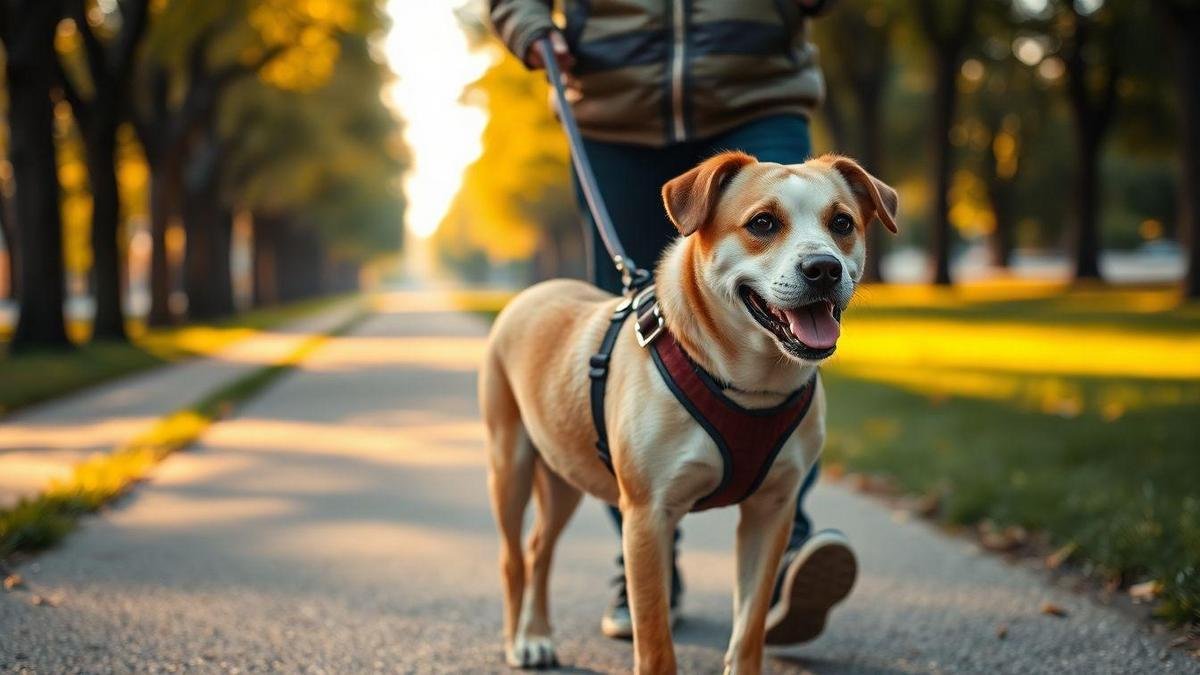
Gear: front‑clip harness and humane tools
I choose a front‑clip harness because it gently redirects the dog’s shoulder toward me when they lunge—gentle, effective, and comfortable. I avoid choke or prong collars; they cause fear and aren’t necessary for teaching leash manners.
What I use:
- Front‑clip harness
- Short leash for better control
- High‑value treats for learning sessions
- Clicker (optional) for precise timing
Harness fit checklist:
- Two fingers under straps at shoulder and chest.
- No red spots or pinching after a few minutes.
- D‑ring sits centered and secure.
- Front legs move freely without chafing.
If anything feels off, I adjust straps before leaving. If your dog shows physical sensitivity during walks, reviewing a simple touch‑check routine can help spot soreness early.
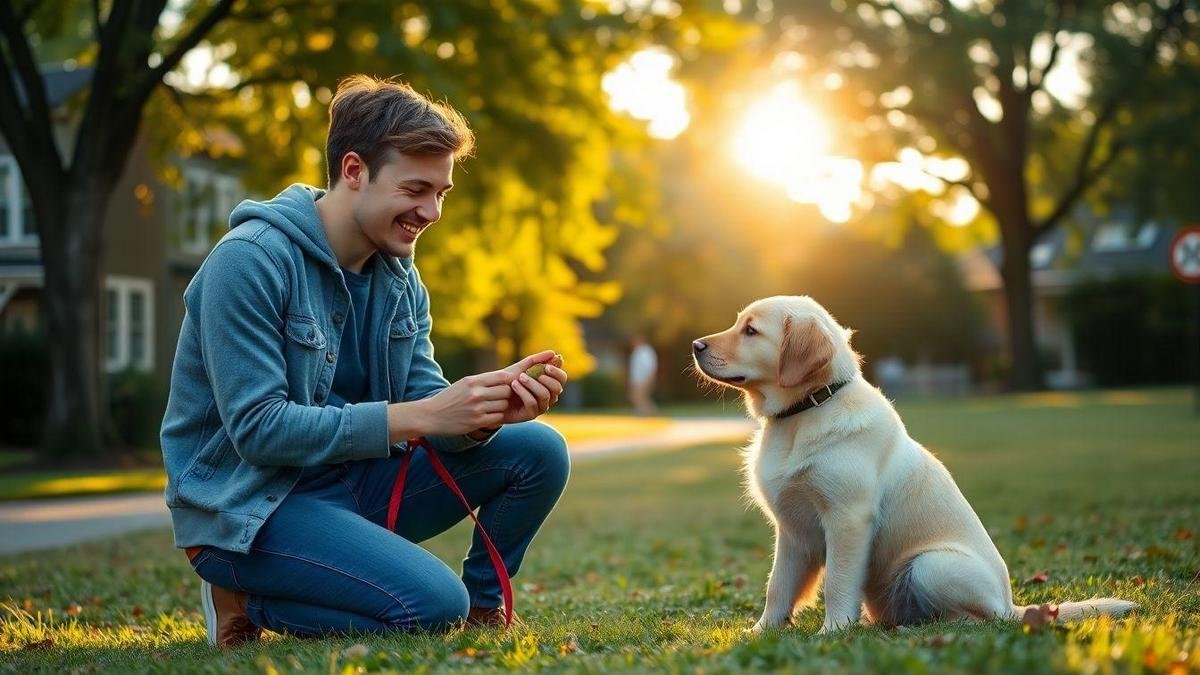
Training puppies: play, short sessions, and a single cue
Puppies learn best when training is fun. I keep sessions brief, watch for stress signs, and use play as a reward.
Routine:
- Warm up: 1–2 min calm handling.
- Practice: 3–5 min focused loose‑leash work.
- Reward: 1–2 min play or high‑value treat.
I teach a single cue—Let’s go. I say it cheerfully, start walking, and reward when the puppy walks with a loose leash. If the puppy pulls, I stop like a tree until the leash goes slack, then say Let’s go and move.
Repeat short 5‑minute sessions several times a day. End each with play so the puppy looks forward to training. When bringing a new puppy into a household, the step of establishing trust and clear routines pairs nicely with tips on building trust with a newly adopted pet and introducing a puppy to older pets.
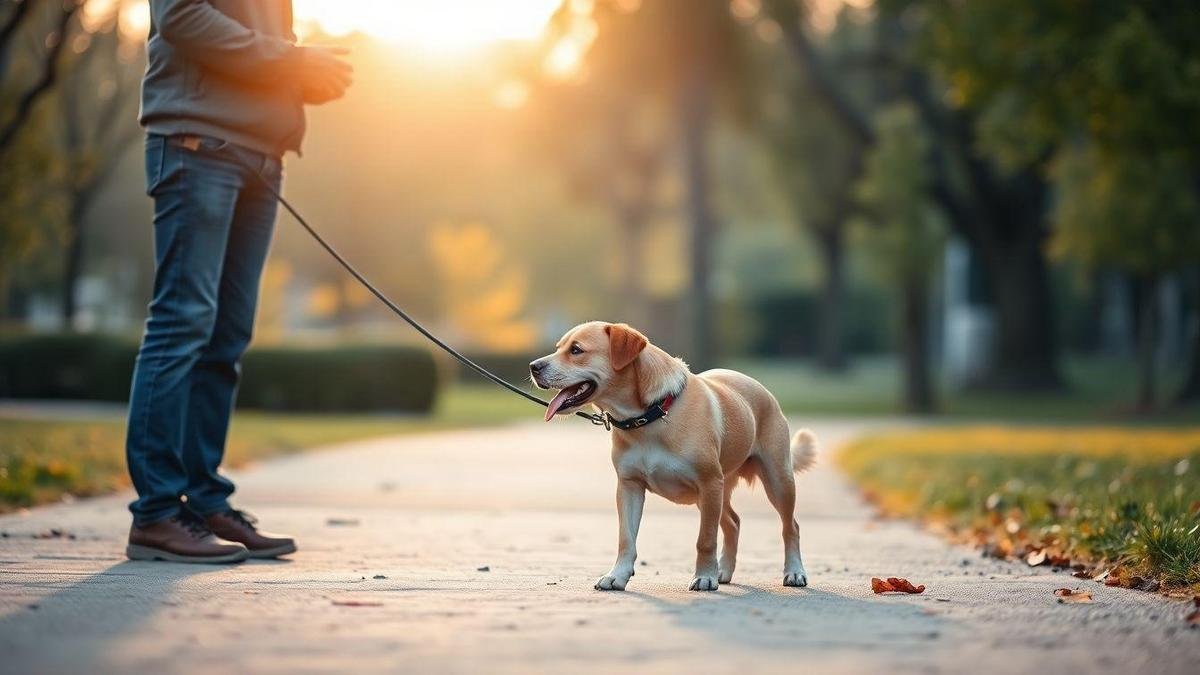
Stop‑and‑go and change direction: clear consequences without force
Stop‑and‑go:
- Start walking with a loose leash.
- If the dog pulls, stop immediately.
- Wait for slack, then move and reward.
- Repeat; pulls decline quickly with consistency.
Change direction:
- If stopping isn’t getting attention, turn and walk the other way.
- Smooth, calm turns make you the leader of the walk and teach the dog to watch your body language.
- Combine stop turn when needed for clarity.
These methods are effective, humane, and fast when practiced consistently. If your dog struggles with impulse control, short indoor drills and play can help — try indoor games that reinforce attention from interactive indoor games or a quick snuffle mat session (DIY ideas at DIY snuffle mat) to build focus before a walk.
Understand why your dog pulls
I read body language to tell if pulling is driven by energy, fear, or excitement:
Signs and first responses:
- Tail high, eager lunges → likely excitement. Pause, reward calm.
- Fast breathing, stiff body, wide eyes → likely fear. Back away, give space, use calm praise.
- Restless at home, constant forward sprinting → high energy. Do pre‑walk exercise.
If you need help reading subtle signals, this overview on signs of stress in dogs during walks is useful for spotting fear or overload early.
If wide eyes or freezing appear, I pause the walk and let the dog calm down first. If high energy is the cause, a quick play session or training before the walk helps.
Quick pre‑walk activities to reduce pulling:
- Fast fetch: 5–7 min to burn energy.
- Short training set (sit, wait, name): 5 min to focus.
- Sniff game or puzzle toy: 5–10 min for mental tiredness.
For ideas that burn energy or provide mental outlets indoors, check best indoor exercises, interactive toys, and scent enrichment. If your dog frequently has bursts of energy, see tips to manage zoomies.
I say a cue like ready before we start the walk to signal we already did some work and now it’s a calm walk.
Fixing setbacks, tracking progress, and when to get help
Reward small steps. I celebrate tiny wins—stop, look at me, five loose steps—and scale rewards accordingly. If setbacks happen, I slow down and go back a level.
Practice locations progression:
- Quiet backyard or small park → 5–10 steady steps loose.
- Neighborhood street → 10–20 steps with turns.
- Busy sidewalk/market → maintain calm for short bursts.
I keep a simple training log: date, minutes, one note. It shows patterns and tells me when I rushed a progression.
Red flags and professionals:
- Sudden, intense pulling or new behavior after injury → call a vet to rule out pain.
- Freezing, shaking, or aggressive lunges → seek a certified behaviorist.
- Pulling that won’t improve with basics → consult a positive trainer.
If your dog’s issues look like anxiety or overload in noisy, small spaces, consider strategies from creating a quiet zone for an anxious dog and review whether your pet needs more mental challenge via mental stimulation ideas. For step‑by‑step reinforcement training, build on basic obedience with a positive trainer if progress stalls.
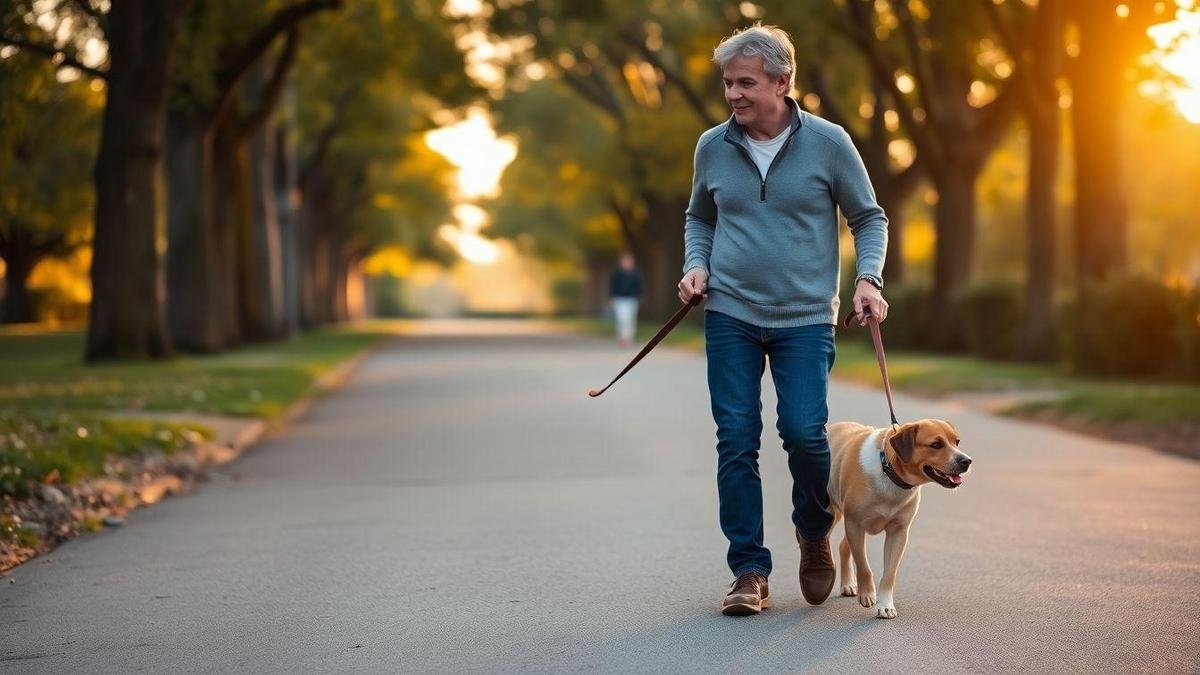
Keep it humane: consistency, patience, and kindness
The goal of “Como adestrar seu cão para não puxar a coleira durante passeios” is not only to stop pulling but to make walks enjoyable and safe. I stop the walk when my dog pulls, reward loose walking, and use the front‑clip harness to redirect gently. Short, frequent sessions and a single clear cue like Let’s go keep training simple and repeatable.
When distractions increase, raise difficulty slowly. When setbacks occur, slow down one step. Consistency, patience, and rewards beat harsh corrections every time.
If you’re preparing a new home routine around training, pairing walks with a calm morning plan helps — see calm morning routine ideas and tips on preparing your home for a new dog.
Simple quick reference — Steps to practice today
- Put on a front‑clip harness and check fit (two fingers under straps).
- Have tiny treats ready and a marker word (Yes!).
- Use the cue Let’s go. Start walking.
- Pull → stop. Wait for slack.
- Slack → step, say Yes, treat, and continue.
- Use short sessions (5–10 min) several times a day.
- Add distractions gradually. Log one line after sessions.
Frequently Asked Questions
Q: How do I stop my dog from pulling right away?
A: Start small: stop walking the instant your dog pulls. Reward calm walking. Repeat short walks every day.
Q: What gear should I use?
A: A front‑clip harness or no‑pull harness and a short leash. Avoid choke chains and prong collars.
Q: How long will it take?
A: With 5–10 minutes daily, many owners see clear progress within weeks. Consistency matters more than speed.
Q: My dog is strong and excited—what then?
A: Stay calm and steady. Use pre‑walk exercise, short sessions, and clear rules. If needed, ask a positive trainer for extra support.
Q: Can I follow a simple plan like “Como adestrar seu cão para não puxar a coleira durante passeios”?
A: Yes—this article follows that exact goal: teach heel, stop, and reward with short, consistent practice.
Conclusion
I’ve been where you are: frustrated by a pulling dog. Calm, consistent steps changed our walks. I stop the walk the moment my dog pulls, reward loose walking with treats and praise, and use a front‑clip harness to redirect kindly. Short, frequent sessions, a clear cue (Let’s go), and gradual progress turned pulling into teamwork.
If pulling is sudden, intense, or tied to fear, call a vet or a positive trainer. Learning is kinder—and faster—when your dog feels safe. Keep a short log, celebrate tiny wins, and be patient: slow and steady wins the race.
If you found this useful, read more at https://blogcraelo.com.

